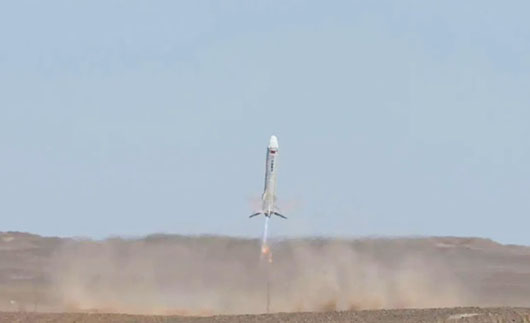Special to CosmicTribune.com, June 26, 2024
By Richard Fisher
In the last week China has advanced its ambitions for Moon control and space control via two operations: first on June 26 China recovered the world’s first Moon samples from the far side of the Moon; and on June 23 the Shanghai Academy of Spaceflight Technology (SAST) performed the most ambitious Chinese vertical take-off/vertical landing (VTVL) reusable rocket test to date.
On June 26 the capsule of the Chang’e-6 unmanned lunar probe landed in Siziwang Banner, in North China’s Inner Mongolia Autonomous Region, containing about 4 pounds of sample materials — for the first time — from the far side of the Moon.

The feat earned immediate congratulations from Chinese Communist Party (CCP) leader Xi Jinping, who said:
“Chang’e-6 achieved the first return of samples from the far side of the moon in human history, which is another landmark achievement in my country’s efforts to build a space power and a scientific and technological power.”
A June 25 Wall Street Journal article declared, “Historic Moon Mission Moves China Ahead in Space Race With U.S.”
Noting that the “new Moon race” is not about just getting there, but to establish permanent settlements for resource exploitation, the Journal notes that China is ahead in that it has achieved its fourth “soft landing” on the Moon while the U.S. has yet to achieve one “new” successful unmanned Moon landing.
The article states, “The recent moon-landing scoreboard is “4 to 0.5” in favor of China, said Simone Dell’Agnello, an Italian researcher who collaborated with Chang’e 6. “The first difference is that China has missions landing on the f—ing moon.”
Dell Agnello is a researcher with Italy’s Istituto Nazionale di Fisica Nucleare (INFN) who participated in a Chang’e-6 laser reflection experiment utilizing a small lunar rover.
Such laser reflectors would not only help China to identify with precision the location of assets on the Moon and Mars, they could also help detect motion on a body’s surface helpful in assessing the interior of a planet.
China’s next unmanned Moon probe mission, Chang’e-7, is scheduled for 2026 and will intensify China’s search for water ice on the South Pole of the Moon.
Full Text . . . . Current Edition . . . . Subscription Information

You must be logged in to post a comment Login